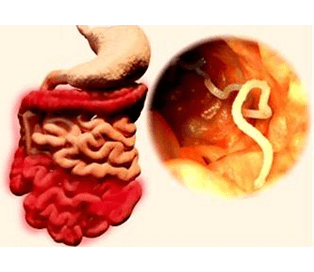FREQUENCY OF INTESTINAL PARASITIC INFECTIONS AMONG SCHOOLCHILDREN IN IBB CITY-YEMEN
Keywords:
Ibb City, intestinal parasitic, prevalence, schoolchildren, YemenAbstract
Objectives: Intestinal parasitic infections are widely distributed and remain one of the most health problems in Yemen. This is a cross-sectional study aimed to determine the prevalence of intestinal parasitic infection and associated factors among schoolchildren in Ibb City, Yemen.
Methods: A total of 300 stool samples were collected from schoolchildren between January to April 2018 and examined by direct smear and formalin ether concentration techniques.
Results: The result showed that 62.7% were positive for intestinal parasites, with a higher frequency of single than multiple infections (85.1 vs. 14.36%, respectively). Also, 85.64% were infected by protozoa whereas 14.36% infected by helminths. The prevalence of infection was 61.70% for Entameba histolytica, 23.94% for Giardia lamblia, 7.45% for Ascaris lumbricoides, 4.3% for Hymenolepis nana, and 2.61% for Enterobius vermicularis. Moreover, the highest prevalence of E. histolytica, G. lamblia, and A. lumbricoides was within group aged 9-12 years. H. nana was between age groups of 9-12 and 13-16 years while E. vermicularis was found among 5-8 and 9-12 years. In addition, females were 69% infected significantly higher than males 54.55%. Besides, the various signs and symptoms associated with intestinal infections have been documented.
Conclusion: High prevalence of intestinal infection was documented among schoolchildren drinking from cistern water, poor hygiene practices, poor food sanitation, non-swimming, and non-previously treated for Schistosoma parasite. High frequency of intestinal parasitic infection between schoolchildren in the study area requires more effort to implement the appropriate programmers that warrant to control and prevention the prevalence of intestinal parasitosis.

Peer Review History:
Received 3 February 2020; Revised 12 March; Accepted 23 April; Available online 15 May 2020
Academic Editor: Ahmad Najib , Universitas Muslim Indonesia, Indonesia, ahmad.najib@umi.ac.id
, Universitas Muslim Indonesia, Indonesia, ahmad.najib@umi.ac.id
Reviewer(s) detail:
Prof. Dr. Hassan A.H. Al-Shamahy , Sana'a University, Yemen, shmahe@yemen.net.ye
, Sana'a University, Yemen, shmahe@yemen.net.ye
Hebatallaha A Moustafa , Ain Shams University, Egypt, anasweety2003@yahoo.com
, Ain Shams University, Egypt, anasweety2003@yahoo.com
Downloads

Published
How to Cite
Issue
Section

This work is licensed under a Creative Commons Attribution-NonCommercial 4.0 International License.









 .
.